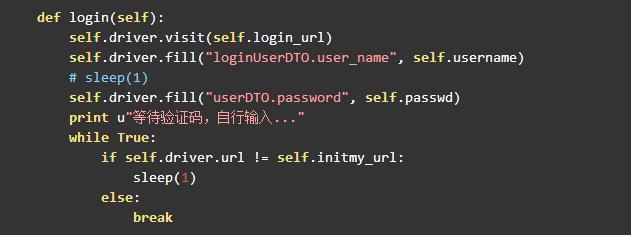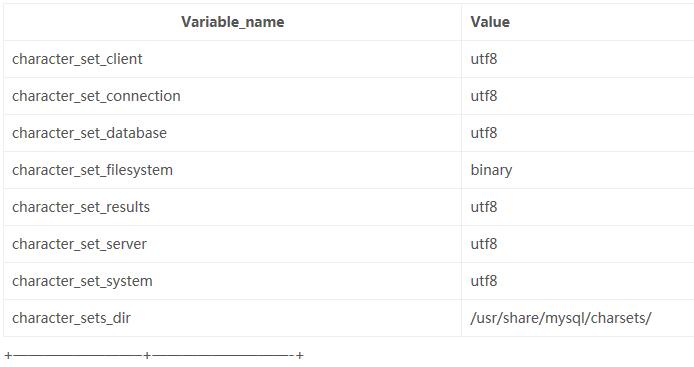详解Django的model查询操作与查询性能优化
1 如何 在做ORM查询时 查看SQl的执行情况
(1) 最底层的 django.db.connection
在 django shell 中使用 python manage.py shell
>>> from django.db import connection
>>> Books.objects.all()
>>> connection.queries ## 可以查看查询时间
[{'sql': 'SELECT "testsql_books"."id", "testsql_books"."name", "testsql_books"."author_id" FROM "testsql_books" LIMI
T 21', 'time': '0.002'}]
(2) django-extensions 插件
pip install django-extensions
INSTALLED_APPS = (
...
'django_extensions',
...
)
在 django shell 中使用 python manage.py shell_plus --print-sql (extensions 强化)
这样每次查询都会 有sql 输出
>>> from testsql.models import Books >>> Books.objects.all() SELECT "testsql_books"."id", "testsql_books"."name", "testsql_books"."author_id" FROM "testsql_books" LIMIT 21 Execution time: 0.002000s [Database: default] <QuerySet [<Books: Books object>, <Books: Books object>, <Books: Books object>]>
2 ORM查询操作 以及优化
基本操作
增 models.Tb1.objects.create(c1='xx', c2='oo') 增加一条数据,可以接受字典类型数据 **kwargs obj = models.Tb1(c1='xx', c2='oo') obj.save() 查 models.Tb1.objects.get(id=123) # 获取单条数据,不存在则报错(不建议) models.Tb1.objects.all() # 获取全部 models.Tb1.objects.filter(name='seven') # 获取指定条件的数据 models.Tb1.objects.exclude(name='seven') # 获取指定条件的数据 删 models.Tb1.objects.filter(name='seven').delete() # 删除指定条件的数据 改 models.Tb1.objects.filter(name='seven').update(gender='0') # 将指定条件的数据更新,均支持 **kwargs obj = models.Tb1.objects.get(id=1) obj.c1 = '111' obj.save() # 修改单条数据
查询简单操作
获取个数
models.Tb1.objects.filter(name='seven').count()
大于,小于
models.Tb1.objects.filter(id__gt=1) # 获取id大于1的值
models.Tb1.objects.filter(id__gte=1) # 获取id大于等于1的值
models.Tb1.objects.filter(id__lt=10) # 获取id小于10的值
models.Tb1.objects.filter(id__lte=10) # 获取id小于10的值
models.Tb1.objects.filter(id__lt=10, id__gt=1) # 获取id大于1 且 小于10的值
in
models.Tb1.objects.filter(id__in=[11, 22, 33]) # 获取id等于11、22、33的数据
models.Tb1.objects.exclude(id__in=[11, 22, 33]) # not in
isnull
Entry.objects.filter(pub_date__isnull=True)
contains
models.Tb1.objects.filter(name__contains="ven")
models.Tb1.objects.filter(name__icontains="ven") # icontains大小写不敏感
models.Tb1.objects.exclude(name__icontains="ven")
range
models.Tb1.objects.filter(id__range=[1, 2]) # 范围bettwen and
其他类似
startswith,istartswith, endswith, iendswith,
order by
models.Tb1.objects.filter(name='seven').order_by('id') # asc
models.Tb1.objects.filter(name='seven').order_by('-id') # desc
group by--annotate
from django.db.models import Count, Min, Max, Sum
models.Tb1.objects.filter(c1=1).values('id').annotate(c=Count('num'))
SELECT "app01_tb1"."id", COUNT("app01_tb1"."num") AS "c" FROM "app01_tb1" WHERE "app01_tb1"."c1" = 1 GROUP BY "app01_tb1"."id"
limit 、offset
models.Tb1.objects.all()[10:20]
regex正则匹配,iregex 不区分大小写
Entry.objects.get(title__regex=r'^(An?|The) +')
Entry.objects.get(title__iregex=r'^(an?|the) +')
date
Entry.objects.filter(pub_date__date=datetime.date(2005, 1, 1))
Entry.objects.filter(pub_date__date__gt=datetime.date(2005, 1, 1))
year
Entry.objects.filter(pub_date__year=2005)
Entry.objects.filter(pub_date__year__gte=2005)
month
Entry.objects.filter(pub_date__month=12)
Entry.objects.filter(pub_date__month__gte=6)
day
Entry.objects.filter(pub_date__day=3)
Entry.objects.filter(pub_date__day__gte=3)
week_day
Entry.objects.filter(pub_date__week_day=2)
Entry.objects.filter(pub_date__week_day__gte=2)
hour
Event.objects.filter(timestamp__hour=23)
Event.objects.filter(time__hour=5)
Event.objects.filter(timestamp__hour__gte=12)
minute
Event.objects.filter(timestamp__minute=29)
Event.objects.filter(time__minute=46)
Event.objects.filter(timestamp__minute__gte=29)
second
Event.objects.filter(timestamp__second=31)
Event.objects.filter(time__second=2)
Event.objects.filter(timestamp__second__gte=31)
查询复杂操作
FK foreign key 使用的原因:
- 约束
- 节省硬盘
但是多表查询会降低速度,大型程序反而不使用外键,而是用单表(约束的时候,通过代码判断)
extra
extra(self, select=None, where=None, params=None, tables=None, order_by=None, select_params=None)
Entry.objects.extra(select={'new_id': "select col from sometable where othercol > %s"}, select_params=(1,))
Entry.objects.extra(where=['headline=%s'], params=['Lennon'])
Entry.objects.extra(where=["foo='a' OR bar = 'a'", "baz = 'a'"])
Entry.objects.extra(select={'new_id': "select id from tb where id > %s"}, select_params=(1,), order_by=['-nid'])
F
from django.db.models import F
models.Tb1.objects.update(num=F('num')+1)
Q
方式一:
Q(nid__gt=10)
Q(nid=8) | Q(nid__gt=10)
Q(Q(nid=8) | Q(nid__gt=10)) & Q(caption='root')
方式二:
con = Q()
q1 = Q()
q1.connector = 'OR'
q1.children.append(('id', 1))
q1.children.append(('id', 10))
q1.children.append(('id', 9))
q2 = Q()
q2.connector = 'OR'
q2.children.append(('c1', 1))
q2.children.append(('c1', 10))
q2.children.append(('c1', 9))
con.add(q1, 'AND')
con.add(q2, 'AND')
models.Tb1.objects.filter(con)
exclude(self, *args, **kwargs)
# 条件查询 # 条件可以是:参数,字典,Q
select_related(self, *fields)
性能相关:表之间进行join连表操作,一次性获取关联的数据。
model.tb.objects.all().select_related()
model.tb.objects.all().select_related('外键字段')
model.tb.objects.all().select_related('外键字段__外键字段')
prefetch_related(self, *lookups)
性能相关:多表连表操作时速度会慢,使用其执行多次SQL查询 在内存中做关联,而不会再做连表查询
# 第一次 获取所有用户表
# 第二次 获取用户类型表where id in (用户表中的查到的所有用户ID)
models.UserInfo.objects.prefetch_related('外键字段')
annotate(self, *args, **kwargs)
# 用于实现聚合group by查询
from django.db.models import Count, Avg, Max, Min, Sum
v = models.UserInfo.objects.values('u_id').annotate(uid=Count('u_id'))
# SELECT u_id, COUNT(ui) AS `uid` FROM UserInfo GROUP BY u_id
v = models.UserInfo.objects.values('u_id').annotate(uid=Count('u_id')).filter(uid__gt=1)
# SELECT u_id, COUNT(ui_id) AS `uid` FROM UserInfo GROUP BY u_id having count(u_id) > 1
v = models.UserInfo.objects.values('u_id').annotate(uid=Count('u_id',distinct=True)).filter(uid__gt=1)
# SELECT u_id, COUNT( DISTINCT ui_id) AS `uid` FROM UserInfo GROUP BY u_id having count(u_id) > 1
extra(self, select=None, where=None, params=None, tables=None, order_by=None, select_params=None)
# 构造额外的查询条件或者映射,如:子查询
Entry.objects.extra(select={'new_id': "select col from sometable where othercol > %s"}, select_params=(1,))
Entry.objects.extra(where=['headline=%s'], params=['Lennon'])
Entry.objects.extra(where=["foo='a' OR bar = 'a'", "baz = 'a'"])
Entry.objects.extra(select={'new_id': "select id from tb where id > %s"}, select_params=(1,), order_by=['-nid'])
reverse(self):
# 倒序
models.UserInfo.objects.all().order_by('-nid').reverse()
# 注:如果存在order_by,reverse则是倒序,如果多个排序则一一倒序
下面两个 取到的是对象,并且注意 取到的对象可以 获取其他字段(这样会再去查找该字段降低性能
defer(self, *fields):
models.UserInfo.objects.defer('username','id')
或
models.UserInfo.objects.filter(...).defer('username','id')
# 映射中排除某列数据
only(self, *fields):
# 仅取某个表中的数据
models.UserInfo.objects.only('username','id')
或
models.UserInfo.objects.filter(...).only('username','id')
执行原生SQL
1.connection
from django.db import connection, connections
cursor = connection.cursor()
# cursor = connections['default'].cursor()
django的settings中的db配置 ' default',指定数据库
cursor.execute("""SELECT * from auth_user where id = %s""", [1])
row = cursor.fetchone()
2 .extra
Entry.objects.extra(select={'new_id': "select id from tb where id > %s"}, select_params=(1,), order_by=['-nid'])
3 . raw
name_map = {'a':'A','b':'B'}
models.UserInfo.objects.raw('select * from xxxx',translations=name_map)
以上就是本文的全部内容,希望对大家的学习有所帮助,也希望大家多多支持【听图阁-专注于Python设计】。

